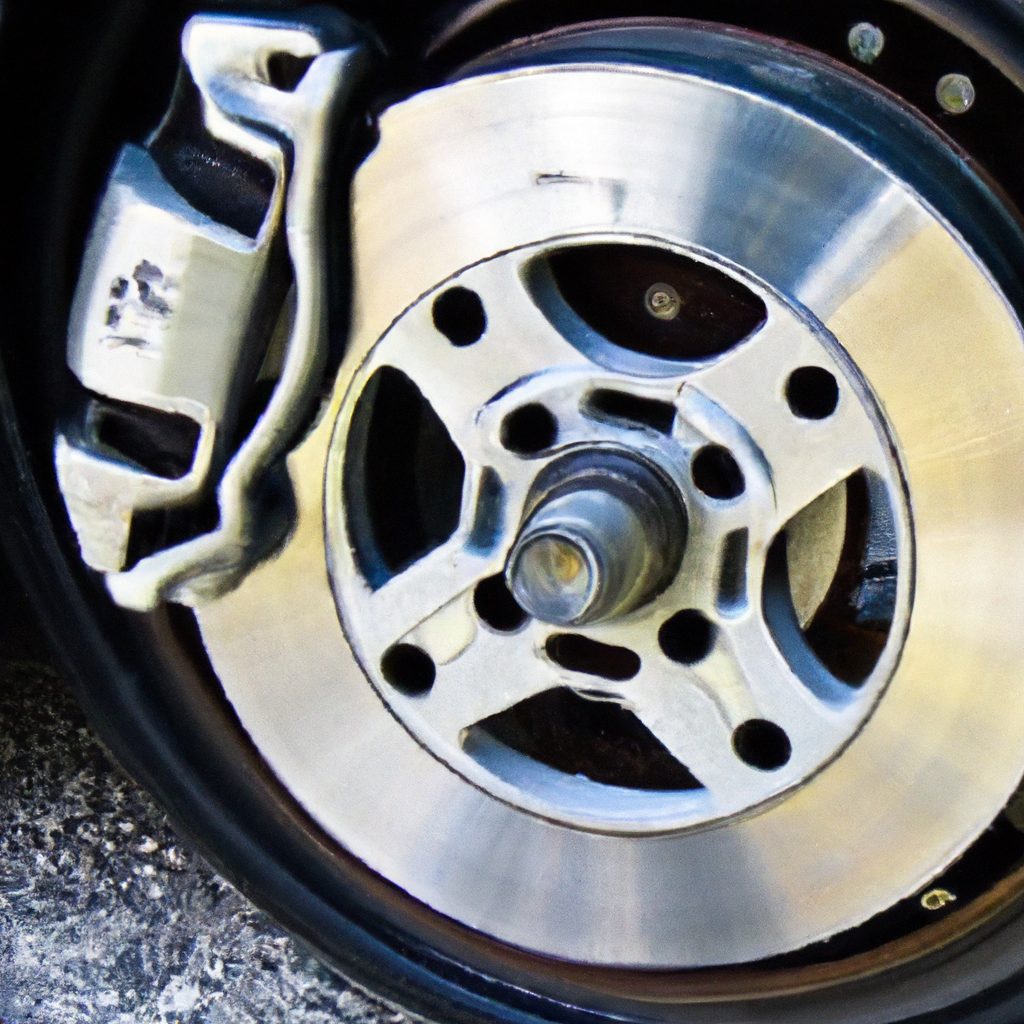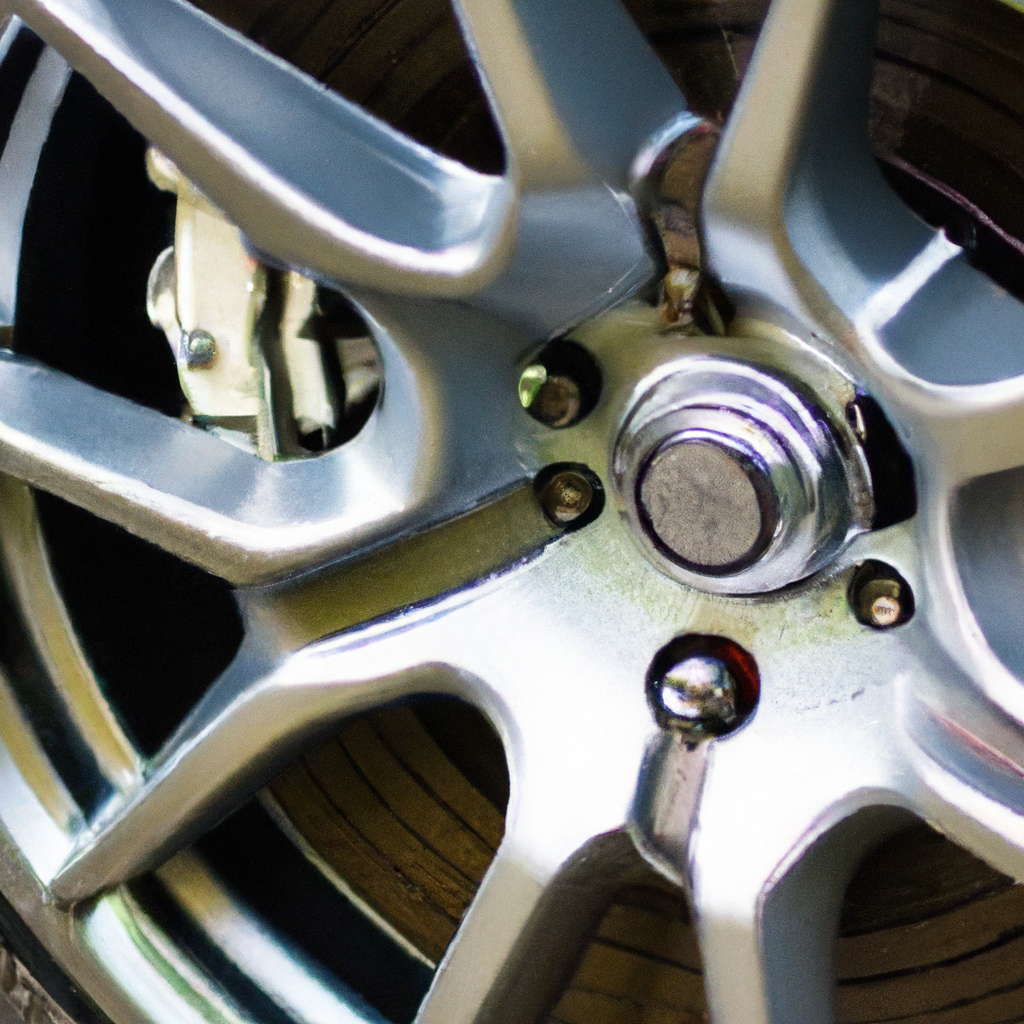If you’ve ever wondered about the best way to clean your vehicle’s wheels, especially when dealing with large brake calipers, you’re in the right place. Keeping your wheels clean not only enhances the overall appearance of your vehicle but also ensures proper maintenance and longevity. In this article, we’ll explore some efficient techniques and helpful tips to ensure your wheels shine like new, even with those pesky large brake calipers. So let’s dive right into it and discover how you can easily tackle this task.

Preparation
Before you begin cleaning the wheels on vehicles with large brake calipers, there are a few steps you need to take in order to properly prepare.
Gather the necessary materials
First and foremost, gather all the necessary materials you will need for the task. This includes a jack, jack stands, lug nut wrench, cleaning solution, scrub brush, brake cleaner, brake lubricant, and a wheel protectant. Having all these items ready will ensure a smooth and efficient cleaning process.
Park the vehicle in a suitable location
Ensure that you park your vehicle in a suitable location before you start working on it. Ideally, you should choose a flat and level surface that provides enough space for you to move around the vehicle safely.
Loosen the lug nuts
Before you can lift the vehicle, it’s important to loosen the lug nuts on the wheels. This will make it easier for you to remove them later on. Using a lug nut wrench, turn each lug nut counterclockwise just enough to break them loose, but do not remove them completely at this stage.
Raise the vehicle
Using a jack, carefully lift the vehicle off the ground. It is important to consult your vehicle’s owner manual to determine the proper jacking points to avoid damaging the vehicle. Once the vehicle is lifted, securely place jack stands underneath to provide additional support and prevent the vehicle from falling.
Removing the Wheels
Now that you have prepared everything, it’s time to remove the wheels from the vehicle.
Use a jack to lift the vehicle
As mentioned earlier, use a suitable jack to lift the vehicle off the ground. This will provide the necessary clearance to remove the wheels. Make sure the vehicle is stable on the jack stands before proceeding.
Support the vehicle with jack stands
To ensure your safety and prevent the vehicle from collapsing, place jack stands underneath the vehicle in a secure position. Check the owner’s manual for the recommended jacking points to ensure proper placement of the jack stands.
Remove the lug nuts
With the vehicle safely raised and supported, it’s now time to remove the lug nuts completely. Use the lug nut wrench to turn them counterclockwise until they are fully loosened. Once the lug nuts are removed, set them aside in a safe place.
Take off the wheels
With the lug nuts removed, you can now carefully take off the wheels from the vehicle. Hold the wheel firmly with both hands and gently pull it straight towards you. Place the removed wheels on a clean and safe surface to prevent any damage or dirt transfer.

Cleaning the Wheels
After removing the wheels, it’s time to clean them thoroughly. This will help remove any dirt, brake dust, or grime that has accumulated over time.
Choose the appropriate cleaning solution
Select a suitable cleaning solution specifically designed for cleaning wheels. There are various options available, such as wheel cleaners or all-purpose cleaners. Make sure to follow the instructions on the product packaging for the best results.
Inspect the brake calipers
Before applying the cleaning solution, it’s a good idea to inspect the brake calipers. Look for any signs of damage or leaks that may require further attention or professional assistance. If everything looks fine, proceed with the cleaning process.
Apply the cleaning solution
Spray the cleaning solution generously onto the entire surface of the wheel. Make sure to reach all areas, including the spokes, rim, and the back of the wheel. Allow the cleaning solution to sit and penetrate the dirt and grime for a few minutes to ensure effective cleaning.
Scrub the wheels
Using a scrub brush, gently scrub the wheels in a circular motion. Pay close attention to areas with stubborn dirt or brake dust build-up. Use firm but gentle pressure to avoid scratching the wheels. Depending on the severity of the dirt, you may need to repeat this step or utilize a more aggressive brush for effective cleaning.
Rinse off the cleaning solution
Once you have thoroughly scrubbed the wheels, rinse off the cleaning solution with clean water. Make sure to remove any residue left behind by the cleaning solution. A high-pressure hose or a bucket of water and a sponge can be used for rinsing. Ensure that all the cleaning solution is washed away before moving on to the next step.

Cleaning the Brake Calipers
In addition to cleaning the wheels, it’s also important to clean the brake calipers. This will help maintain their functionality and appearance.
Protect sensitive components
Take care to protect any sensitive components around the brake calipers, such as sensors or brake lines. Cover them with a plastic bag or use masking tape to prevent any cleaning solution or debris from coming into contact with these areas.
Use a brake cleaner
Using a brake cleaner specifically designed for cleaning brake calipers, spray it onto the calipers. The brake cleaner will help dissolve and remove any brake dust, grease, or grime that may have built up over time.
Spray the brake cleaner onto the calipers
Ensure that you cover all areas of the brake calipers with the brake cleaner. Pay special attention to crevices and hard-to-reach places. Allow the brake cleaner to sit for a few minutes to effectively loosen any dirt or grime.
Wipe off excess dirt and grime
After allowing the brake cleaner to penetrate, use a clean cloth or sponge to wipe away any excess dirt and grime. Be thorough in your cleaning, ensuring that all visible dirt is removed.
Apply a brake lubricant
To maintain the functionality of the brake calipers, it’s essential to apply a brake lubricant after cleaning. Follow the manufacturer’s instructions and apply the lubricant to the moving parts of the calipers. This will help reduce friction and ensure smooth operation.

Drying and Reinstalling the Wheels
After cleaning the wheels and brake calipers, it’s time to dry them and reinstall them onto the vehicle.
Pat the wheels dry
Using a clean and dry cloth or towel, gently pat the wheels dry. Avoid using excessive force or rubbing, as this can potentially leave scratches on the surface of the wheels.
Inspect the brake calipers again
Before reinstalling the wheels, take a final moment to inspect the brake calipers for any residual dirt or grime that may have been missed. Wipe away any remaining dirt or cleaning solution if necessary.
Reinstall the wheels
Align the wheels with the wheel studs and carefully slide them back onto the vehicle. Ensure that they are seated properly and securely in place.
Tighten the lug nuts
Using your lug nut wrench, tighten the lug nuts in a clockwise direction. Start with hand-tightening and then use the wrench to firmly tighten the lug nuts. Refer to your vehicle’s specifications for the recommended torque settings to avoid over-tightening or under-tightening.
Lower the vehicle
With the lug nuts tightened, it’s time to lower the vehicle from the jack stands. Gradually lower the vehicle using the jack until it is resting safely on the ground. Remove the jack stands carefully and set them aside.

Finishing Touches
With the wheels reinstalled, it’s time to address the finishing touches to complete the cleaning process.
Clean the wheel wells and fender liners
Take a moment to clean the wheel wells and fender liners. These areas can accumulate dirt and debris over time, which can affect the overall appearance of your vehicle. Use a brush or cloth to remove any dirt or grime from these areas.
Apply a wheel protectant
Applying a wheel protectant can help maintain the cleanliness and appearance of your wheels for a longer period of time. Follow the instructions provided with the wheel protectant and apply it evenly to the wheels, taking care to cover all surfaces.
Check tire pressure and tread depth
As a final touch, check the tire pressure and tread depth of each tire. Proper tire inflation and adequate tread depth are crucial for safe driving. Refer to your vehicle’s manual for the recommended tire pressure and use a tread depth gauge to ensure your tires are within the acceptable limits.
Clean the wheel lugs
To further enhance the visual appeal of your clean wheels, take a moment to clean the wheel lugs. Use a cloth or brush to remove any dirt or grime from the lugs. This small step can make a big difference in the overall cleanliness and appearance of your wheels.
Step back and admire the clean wheels
Finally, take a step back and admire the hard work you’ve put into cleaning your wheels! Enjoy the refreshed and sparkling appearance of your wheels, knowing that you have taken the necessary steps to maintain their cleanliness and functionality.
By following these steps and putting in the effort, you can ensure that your wheels remain clean and in top condition. Regular maintenance and cleaning will not only enhance the appearance of your vehicle but also contribute to its overall performance and longevity. So roll up your sleeves and get started on cleaning those wheels with large brake calipers!

